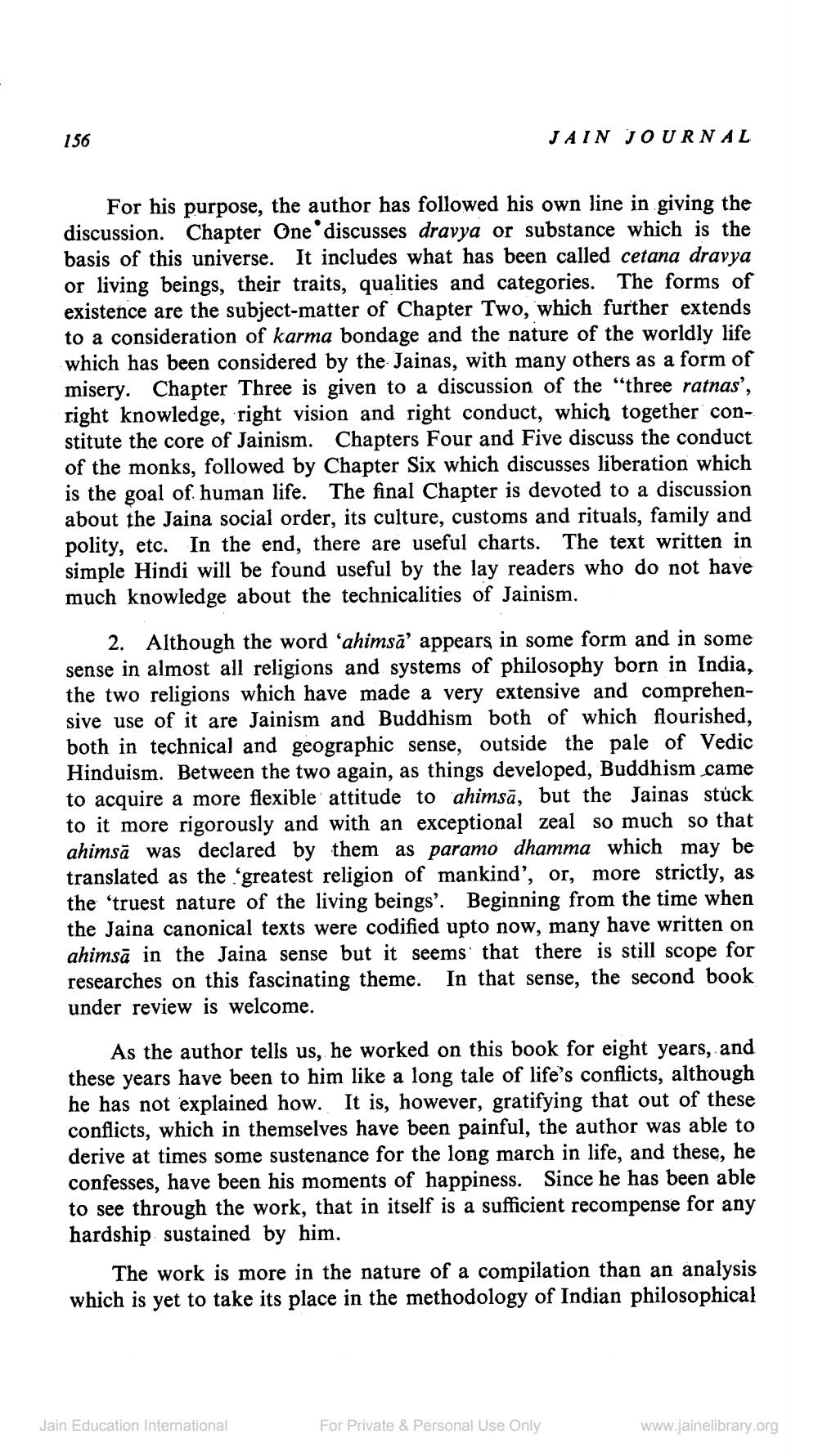Book Title: Jain Journal 1973 01 Author(s): Jain Bhawan Publication Publisher: Jain Bhawan Publication View full book textPage 4
________________ 156 JAIN JOURNAL For his purpose, the author has followed his own line in giving the discussion. Chapter One discusses dravya or substance which is the basis of this universe. It includes what has been called cetana dravya or living beings, their traits, qualities and categories. The forms of existence are the subject-matter of Chapter Two, which further extends to a consideration of karma bondage and the nature of the worldly life which has been considered by the Jainas, with many others as a form of misery. Chapter Three is given to a discussion of the "three ratnas', right knowledge, right vision and right conduct, which together constitute the core of Jainism. Chapters Four and Five discuss the conduct of the monks, followed by Chapter Six which discusses liberation which is the goal of human life. The final Chapter is devoted to a discussion about the Jaina social order, its culture, customs and rituals, family and polity, etc. In the end, there are useful charts. The text written in simple Hindi will be found useful by the lay readers who do not have much knowledge about the technicalities of Jainism. 2. Although the word 'ahimsă' appears in some form and in some sense in almost all religions and systems of philosophy born in India, the two religions which have made a very extensive and comprehensive use of it are Jainism and Buddhism both of which flourished, both in technical and geographic sense, outside the pale of Vedic Hinduism. Between the two again, as things developed, Buddhism came to acquire a more flexible attitude to ahimsā, but the Jainas stuck to it more rigorously and with an exceptional zeal so much so that ahimsā was declared by them as paramo dhamma which may be translated as the greatest religion of mankind', or, more strictly, as the 'truest nature of the living beings'. Beginning from the time when the Jaina canonical texts were codified upto now, many have written on ahimsā in the Jaina sense but it seems that there is still scope for researches on this fascinating theme. In that sense, the second book under review is welcome. As the author tells us, he worked on this book for eight years, and these years have been to him like a long tale of life's conflicts, although he has not explained how. It is, however, gratifying that out of these conflicts, which in themselves have been painful, the author was able to derive at times some sustenance for the long march in life, and these, he confesses, have been his moments of happiness. Since he has been able to see through the work, that in itself is a sufficient recompense for any hardship sustained by him. The work is more in the nature of a compilation than an analysis which is yet to take its place in the methodology of Indian philosophical Jain Education International For Private & Personal Use Only www.jainelibrary.orgPage Navigation
1 2 3 4 5 6 7 8 9 10 11 12 13 14 15 16 17 18 19 20 21 22 23 24 25 26 27 28 29 30 31 32 33 34 35 36 37 38 39 40 41 42 ... 60
